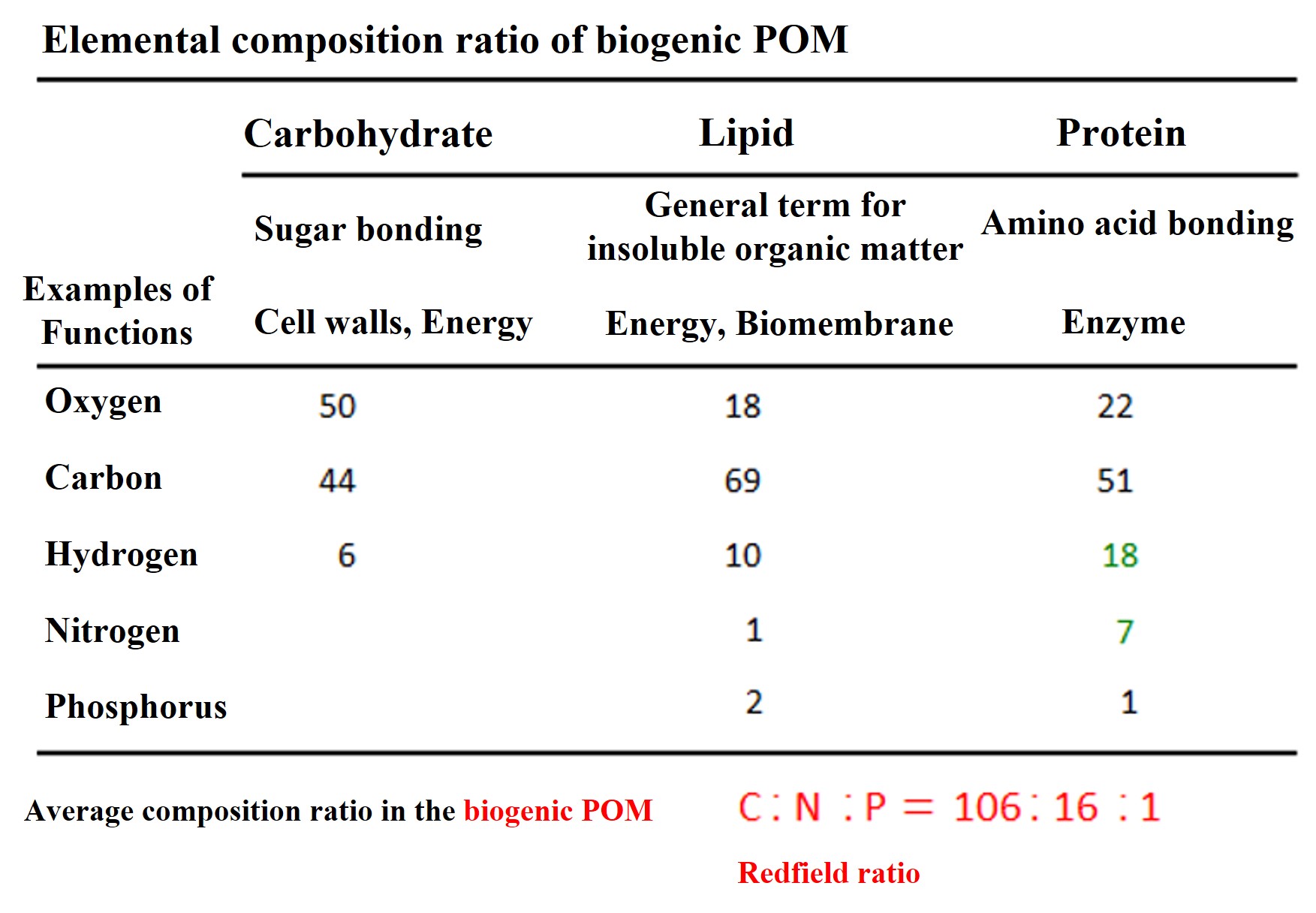Composition of biogenic organic matter and Redfield ratios
Organic matter is a carbon compound derived from living organisms, so organic composition is derived from the components that make up living organisms. The components of living organisms are carbohydrates, lipids, and proteins (see table below).

Carbohydrates are sugars bound together and are stored in the body as a source of energy and are components of cell walls. The sticky ingredient in kelp is also an acidic polysaccharide and a carbohydrate. Carbohydrates are composed only of oxygen, carbon, and hydrogen.
Lipids are a general term for insoluble organic matter, which is stored in the body as a source of energy and is a component of biological membranes. Lipids are characterized by their high phosphorus content.
Proteins are high-molecular organic matter consisting of amino acids bound together and are the main constituents of living organisms. They also have a variety of other functions, such as enzymes. Proteins are characterized by their high nitrogen content.
The average compositional ratio of marine biogenic particles is C:N:P = 106:16:1 (*). This ratio is called the Redfield ratio, after the man who discovered this natural law. However, the ratio of phosphorus frequently deviates from the Redfield ratio, for example, the ratio of phosphorus increases as the proportion of lipid-rich organisms increases due to their good nutritional status (**).
*Originally, Redfield predicted that the average composition of marine life should be equal to the C:N:P ratio of deep water because the C:N:P ratio in deep water is 106:16:1. And that prediction came true.
**What ratio of surface seawater CNP ratio decreases? Is the ratio of decrease similar to the Redfield ratio? Is it different? In research, we often consider the following questions. For the point of Redfield Ratio, please refer to "Redfield Ratio" Ocean Research, TAGUCHI Satoshi (2016).

